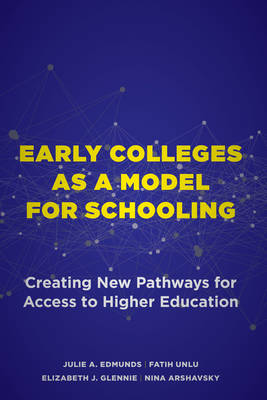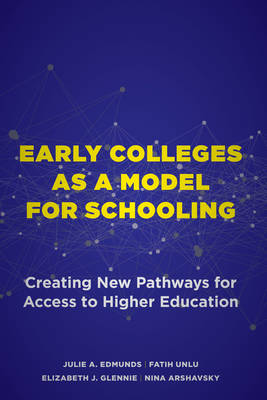
- Retrait gratuit dans votre magasin Club
- 7.000.000 titres dans notre catalogue
- Payer en toute sécurité
- Toujours un magasin près de chez vous
- Retrait gratuit dans votre magasin Club
- 7.000.0000 titres dans notre catalogue
- Payer en toute sécurité
- Toujours un magasin près de chez vous
Early Colleges as a Model for Schooling
Creating New Pathways for Access to Higher Education
Julie A Edmunds, Fatih Unlu, Elizabeth J Glennie, Nina ArshavskyDescription
Early Colleges as a Model for Schooling advocates for early college high schools as an effective means of reducing academic, cultural, and financial obstacles to postsecondary education.
This perceptive work evaluates, both quantitatively and qualitatively, the impacts of early colleges--hybrids that blend elements of secondary and postsecondary education. It examines the strengths and challenges of early college models of different designs and explores their place in the greater education system.
Julie A. Edmunds, Fatih Unlu, Elizabeth J. Glennie, and Nina Arshavsky craft their narrative around the findings of one of the most ambitious studies to date on early college high schools, a fifteen-year longitudinal study involving more than four thousand students across nineteen secondary schools that have adopted the model. They offer insight into the student experience within early college high schools and beyond.
The authors demonstrate how the well-structured and supportive educational environment of early college not only prepares students academically for college-level coursework but also helps students navigate logistical challenges in applying for colleges and universities. They show how the positive outcomes of the early college experience can help tip the balance toward successful postsecondary educational experiences, especially for historically underserved students such as low-income students, minority students, and first-generation college students.
As the authors point out, a shift in the way the transition between secondary and postsecondary education is implemented provides an achievable approach to improving college readiness and lowering educational barriers. They argue persuasively that wider adoption of this educational model in high schools has great potential to improve overall access to higher education.
Spécifications
Parties prenantes
- Auteur(s) :
- Editeur:
Contenu
- Nombre de pages :
- 216
- Langue:
- Anglais
Caractéristiques
- EAN:
- 9781682537596
- Date de parution :
- 01-11-22
- Format:
- Livre broché
- Format numérique:
- Trade paperback (VS)
- Dimensions :
- 152 mm x 226 mm
- Poids :
- 249 g

Les avis
Nous publions uniquement les avis qui respectent les conditions requises. Consultez nos conditions pour les avis.






